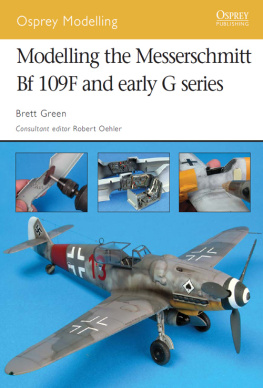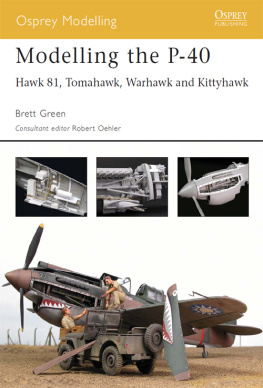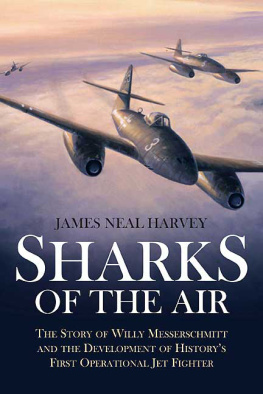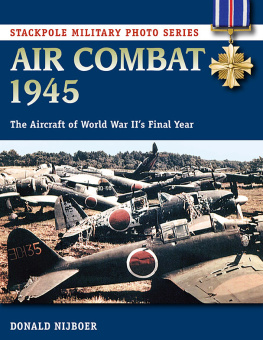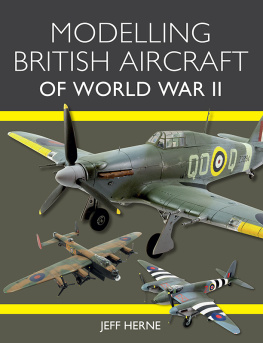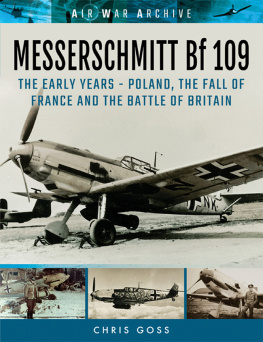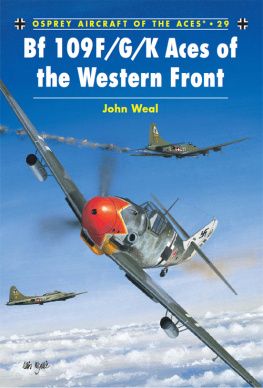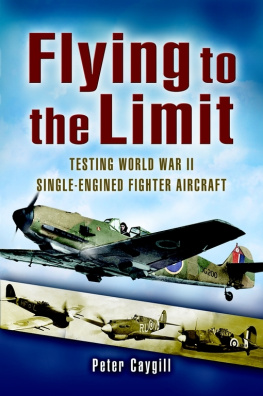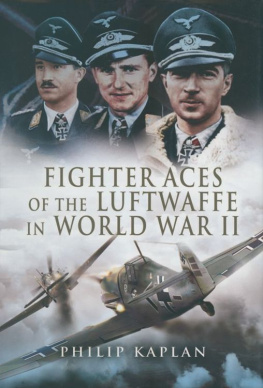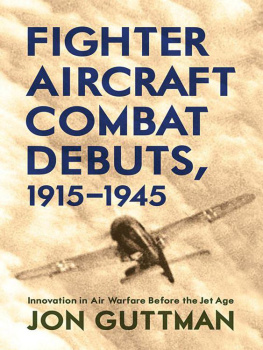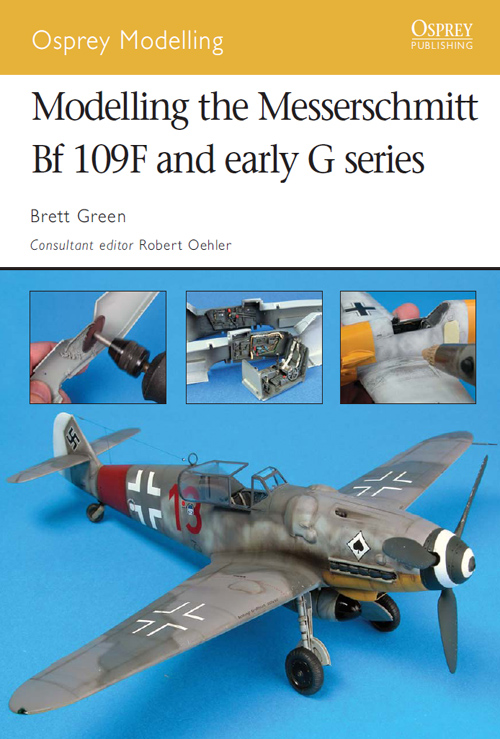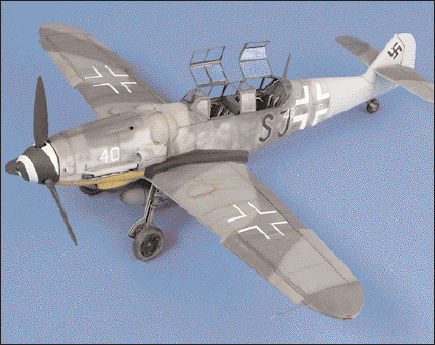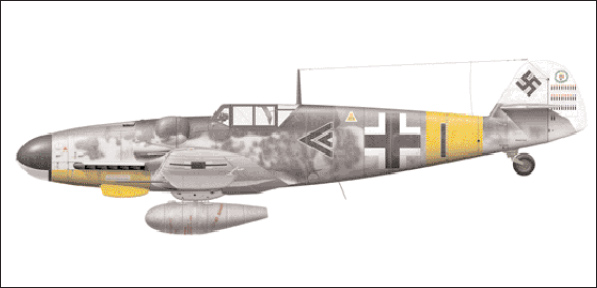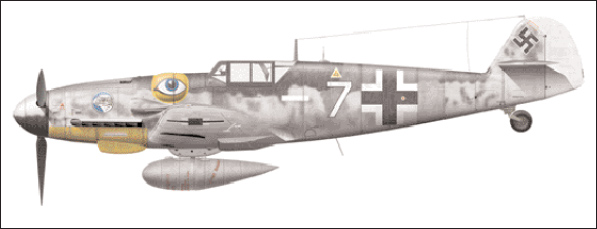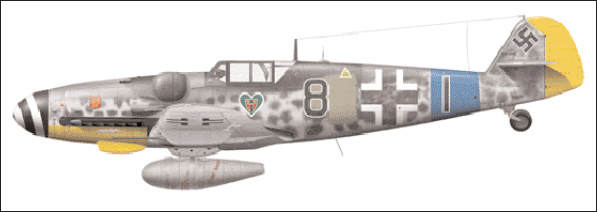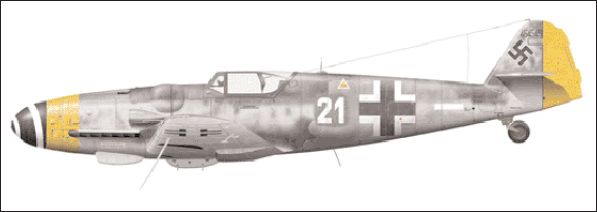Designation and sub-types |
Key identifying characteristics |
Comments |
| Bf 109F-1 | Improved aerodynamic shape compared to Bf 109E, including revised cowling, large streamlined spinner, redesigned wing with new split radiator flaps and landing flaps; rounded wingtips and unbraced horizontal stabilizers. Engine-mounted, centre-firing MG-FF cannon. Wing guns deleted. Daimler-Benz DB 601 N power plant with a larger metal three-bladed VDM propeller than the E series. New radio configuration required lower fuselage whip antenna. | The Bf 109F-1 was preceded by four prototypes and possibly a small Bf 109F-0 production series. Deliveries of the Bf 109F-1 commenced in Autumn 1940. Production totalled 208. |
| Bf 109F-2 F-2/B (Jabo) F-2/U1 (MG131 cowl guns) F-2/R5 (300-litre drop tank) | Centre-mounted MG-FF replaced with MG151/15 (15mm) cannon. External stiffener strips added to the tail across Frame 9 during production run. Circular wheel well opening introduced during production. External armoured windscreen glass fitted individually. | First major production variant of the Bf 109F. Deliveries began January 1941. Total production around 1,380. |
| Bf 109F-4 per F-2 plus F-4/Z with GM-1 F-4/Trop F-4/R1 (Gondola cannon armed) F-4/R2, R3, R4, R5 (recon variants) | Fitted with Daimler-Benz DB 601 E engine with improved performance on lower octane fuel. Centre-mounted gun replaced with MG151/20 (20mm) cannon. Larger diameter supercharger intake introduced during production. Internal tail strengthening introduced during production resulting in omission of tail stiffener straps. | Introduced into service in June 1941. Total production of 1,841 |
| Bf 109G-1 Bf 109G-1/R6 (Gondola-mounted 20mm cannon) | Specialized high-altitude variant with pressurized cockpit. New air intake scoops on engine cowl. Revised cockpit armour to seal canopy. Welded canopy construction. Daimler-Benz 605 engine with new cooling scoops. Larger oil cooler. Relocated fuel filler hatch. Windscreen design revised, and cleaner tube installed. Broader propeller blades | Introduced into service June 1942. Total production 167. |
| Bf 109G-2 R1, R2, R3, R6, U1 and Trop | Per G-1 without pressurization equipment and associated fittings. Some fitted with the vertical head armour of the G-1. Ventilation scoops below windscreen, and rectangular ventilation flaps mid-fuselage (not all machines). | Introduced into service June 1942. Total production around 1,586. |
| Bf 109G-3 | Per G-1, plus new features introduced on the G-4 (listed below). | Introduced into service March 1943. Total production 50. |
| Bf 109G-4 R1, R2, R3, R4, R6, R7, U1 and Trop | Per G-2. Fuselage antenna wire lead-in moved aft between Stations 7 and 8. Larger main wheels and non-retractable larger tail wheel, plus bulges on top of wings to accommodate wider wheels introduced during production. Galland Panzer canopy armour in late-production machines. | Introduced into service November 1942. Total production around 1,242. |
| Bf 109G-5 | Specialized high-altitude variant with pressurized cockpit and associated fittings. Otherwise similar to G-6 below. | Introduced into service December 1943. Total production of 475 |
Bf 109G-6 Sub-types per earlier variants plus U2, G-6/N, G-6/Y
Bf 109G-6/AS will be dealt with in a future volume | Per G-4. Cowl machine guns replaced with MG131s, requiring large bulges to accommodate belt chutes. Redesigned gun troughs. New inspection hatch on rear fuselage. The following improvements were introduced at various stages during production. DF loop, shorter antenna mast/no antenna mast (attached direct to fuselage), Galland Panzer canopy armour, Erla Haube clear-vision hood, tall fin and rudder (different patterns and Flettner/trim tab configurations), Morane mast for FuG 16ZY | Introduced into service February 1943. Total production of more than 12,000. |
| Bf 109G-8 | Specialized photo reconnaissance variant based on the Bf 109G-6 | Introduced into service November 1943. Total production greater than 900. |
| Bf 109G-12 | Two-seater trainer based on reconditioned Bf 109G-2, G-3, G-4 and G-6 airframes. Usually unarmed. Typically fitted with 300-litre under-fuselage drop tank. | Introduced into service around March 1944. Total production less than 500 |
| Bf 109G-14 Bf 109G-14/AS will be dealt with in a future volume | Per G-6 | Introduced into service July 1944. Total production of around 5,500. |

